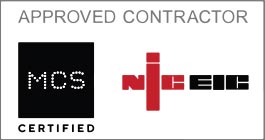In the Solar Photovoltaic sector the terminology can at times appear confusing, but hopefully our short guide to Solar Photovoltaic terminology below will help clarify things. If there’s something you can’t understand then please get in touch – we’re more than happy to help clarify things.
Click on the terms below to see a full explanation:
Smart Export Guarantee
Note that the SEG replaced FiTs for NEW installations from the 1st April 2019.
The Smart Export Guarantee is a mechanism to pay people who generate small amounts of renewable energy for the electricity they export to the grid. It applies to people installing a renewable energy generating system using solar PV (as well as other renewables)
Feed In Tariffs
Note that FiTs were withdrawn for NEW installations from the 1st April 2019. This information is for historic context only.
Feed in Tariffs are a payment made by an electricity company to the owner of Solar PV Panels to pay for the energy generated by the panels – used by the consumer AND exported into the electricity grid. They are currently funded by a small supplement added to everybody’s electricity bills – they are NOT funded by the government.
FiTs are guaranteed for 20 years for domestic Solar PV installations and are index linked to the retail price index.
The solar panels used to convert solar energy into electricity produce a Direct Current, DC. However, the electricity that we use in the house, office or factory are all Alternating Current, AC. An inverter is a piece of electrical equipment that converts Direct Current to Alternating Current – i.e. a device that converts the electricity generated by the solar panel into something that we can use.
Microgeneration Certification Scheme
The MCS certificates microgeneration technologies used to produce electricity and heat from renewable sources. Find out more about MCS certification.
All components used on a Solar PV system must be MCS approved to allow you to register to receive the Feed in Tariff.
An evolution of the Inverter system detailed above. A decentralised system featuring individual small inverters for each solar panel, installed under the panels themselves. The advantages are a cleaner install (no larger inverter required to be fitted within the loft space) and the ability for the system to optimise output on a panel by panel basis. Slightly more expensive than a traditional centralised inverter system, microinverters pay for themselves by allowing all panels to deliver at maximum output (unlike traditional inverters) even when the roof is covered by partial shade (e.g. from a chimney or nearby tree). The enphase microinverter system, in particular, also incorporates an incredibly detailed reporting and monitoring system – all accessible over the internet.
Photovoltaics is the process by which sunlight, or solar energy, is converted into energy, in the form of a direct current DC, using a material called a semiconductor. Note that the mains electricity that we use is Alternating Current or AC. See glossary term for Inverter.
An acronym for Photovoltaics.
Renewable Energy Consumer Code
The RECC Assurance Scheme was set up by the Renewable Energy Association. It aims to guarantee a high quality experience for consumers wishing to buy solar PV systems for their homes. Find out more about RECC assurance.
A hybrid microinverter/centralised inverter system, using a unit under each panel which allows all panels to deliver maximum power even during partial shading conditions, but still requiring a centralised inverter system.
A piece of equipment that monitors your electricity generation and makes it available on the internet. This allows you to see information such as current power production, power production over time, total power production and the amount of CO2 saved by using renewable solar pv generation.




